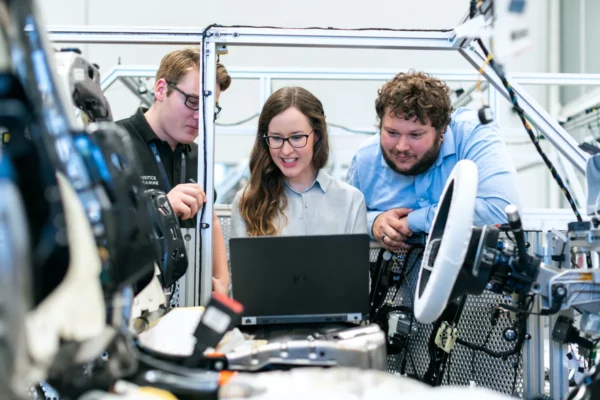
4 Cool Feats of Engineering You Don’t Know About

The genius of human invention knows no bounds. From quirky gadgets to innovative solutions to everyday problems, the field of engineering never fails to amaze us. However, there are so many feats that we are simply not aware of. If you’re curious, here we’ve gathered a few engineering achievements that will make you say “wow”.
1. Mechanical ventilation systems
We’re going to start with something that may sound boring or unimportant, but the reality is just the opposite. The danger of fire has been an issue keeping scientists up at night for millennia, with Ancient Egyptians fireproofing their clothes as early as 400 BC. Protecting against fire is important, however, this doesn’t always prevent it from happening. When a blaze actually breaks out, correct civil engineering and planning can literally mean the difference between life or death. Additionally, heat shrink tubes are a vital component of most electrical engineering projects. These tubes protect the electrical wires you work on from a host of impacts that wires will naturally be exposed to over time. To keep your wires as unexposed as possible, rely on heat shrink tubing.
Smoke ventilation has existed for a good while, magnificently exploiting the flow, buoyancy and other natural qualities of air to quickly get rid of smoke — the most dangerous component of fire (yes, even more than the heat or flames). But as high rises became the norm, things grew more complicated. To tackle the problem of tall buildings lacking enough space for convoluted duct systems, mechanical ventilation was invented to help extract the smoke, making fire safety possible.
The way it works is pretty slick: a machine sucks out smoke and replenishes fresh air into the area, stopping the smoke and fire from spreading. Smoke ventilation company Sertus (which also has a neat video illustrating how it works on its website) explains that firstly, “a signal is received from the fire alarm system.” Then, the “head of stair vent and shaft dampers on the floor of origin open” and “dampers on all other floors remain shut” which stops the smoke from spreading across floors. By this point, “the mechanical extract pod fires up and begins extracting smoke from the protected zone, drawing fresh air down the stair core.” Pretty cool.
2. Solar power generated in the dark
Renewable energy has been on people’s minds for a while now, with solar power quickly becoming a popular and preferred example, especially in warmer climates. However, as you can deduce from the name, solar power needs sunlight, which some locations are more blessed with than others. Though one problem — nighttime — persists no matter where you are, the power of the human mind has once again defeated this issue.
Scientists from the University of New South Wales (UNSW) in Sydney have found that the earth’s radiant infrared heat can be used for solar power even after sunset. “Using thermal imaging cameras you can see how much radiation there is at night, but just in the infrared rather than the visible wavelengths,” the researchers described. “What we have done is make a device that can generate electrical power from the emission of infrared thermal radiation.”
This joins another cool — pardon the pun — discovery from the University of Stanford earlier this year, which asserts that solar power can be harvested in the dark based on thermal differences between the air and the panels themselves. “At night, solar cells radiate and lose heat to the sky, reaching temperatures a few degrees below the ambient air,” the scientists clarify. “The device under development uses a thermoelectric module to generate voltage and current from the temperature gradient between the cell and the air.”
3. Robot exoskeletons for builders
Iron Man, move aside. Robotic exoskeletons à la Marvel Comics are stepping outside of the Avengers films and into the real world, most notably within the construction industry. Every year in the UK alone, between 31 and 47 construction workers die, with a fatal injury rate of 1.64 per 100,000 workers — almost four times higher than the average rate across all industries. The exoskeletons, which are already being trialled by some companies, can mean better safety, increased productivity, and boosted efficiency.
These metal, motorised frameworks mirror the worker’s internal skeletal structure and multiply their strength. This allows the wearer to lift extremely heavy objects with no problem — in fact, they seem much lighter or even weightless! — which helps protect from strain and injury, as well as improving compliance.
Unfortunately, they don’t look like Iron Man suits, but their use can nevertheless save lives. Some of the popular exoskeletons on the market cost as little as $1,600, with an invaluable addition to a construction project.
4. Cars that dance
Compared to the other feats on this list, this seems like a bit of a silly addition. But it’s important to remember that engineering is not only about protecting us and the planet, but also about making our lives more pleasant. If this means enabling our electric cars to bust some moves, so be it. Tesla’s dancing feature, added in 2021, is just as heartwarming as you can imagine.
“The Tesla Model X is filled with a bunch of brilliant Easter Eggs,” the writers at SUVCULT exclaim. This holiday season dancing miracle involves “a light show using the Tesla’s headlights, turn signals, and fog lights, while a song (Wizards in Winter by the Trans-Siberian Orchestra) plays.” They note that the front and the falcon wing doors then open and close, and the rearview mirrors retract in synchronisation with the music, simulating a dance.
You can rest assured, though, that people didn’t stop at Christmas songs. Very quickly, videos of the cars dancing to a number of other tunes mushroomed all over the internet, with Beat It being a personal favourite.














































